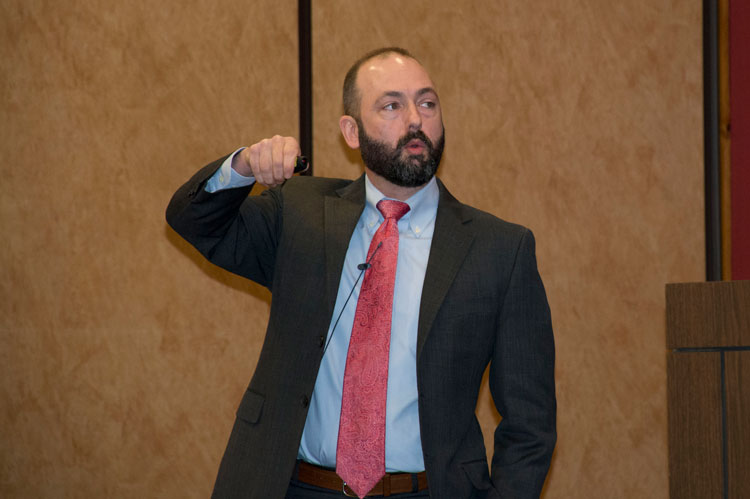
Nutrient application often ends up in the hot seat being blamed for impairing water quality. Part of the problem, according to the University of Kentucky’s Josh McGrath, is a disconnect between significant agronomic versus environmental losses in terms of nutrients.
As an example, he shared that a couple extra pounds per acre of phosphate will have minimal impact on a farm’s bottom line and may improve yield but can have significant environmental effects.
As the opening speaker at the UW Discovery Farms Annual Conference held in Wisconsin Dells, Wis., last week, McGrath said, “It’s not a debate about clean water because I think most farmers want clean water. It’s a debate of who bears the cost for clean water. Because certainly, with current agronomic technology, there is an economic cost to protecting water quality.”
McGrath explained that the agriculture industry has widely accepted the ‘4 Rs’ approach to fertilizer and manure application: Applying the right source at the right rate at the right time in the right place in a well-managed cropping system.
According to McGrath, what is often glossed over is the term “right,” which is defined by performance objectives. Those objectives could be optimized production, maximized yield, maximum return on investment, or minimal environmental impact. While all are important, these objectives compete with each other.
It’s a balance
McGrath reminded the audience that maximum profit is not equal to maximum yield. He also pointed out that the most profitable system is likely to have an environmental impact.
“We can’t have our cake and eat it, too,” McGrath said. “This is really important to understand.”
He said that at the beginning of the growing season, it’s hard to predict the nitrogen rate that is going to be most profitable, highest yielding, or that will be best for the environment. In the end, what’s best for the environment may not be best for the farm, and what’s best for the farm is probably not the most environmentally friendly.
“A new mousetrap is needed,” McGrath said. “Implementing current best practices is not enough. We will not achieve water quality goals even if you do everything right.”
McGrath reaffirmed that we need to keep doing everything right, but we also need to do more. To get there, he sees a need for more fertilizer chemistry technology, better application equipment, improved nutrient recommendation systems, better data management, and more collaboration between farmers, consultants, soil scientists, and environmentalists.







